-
 Bitcoin
Bitcoin $117900
0.31% -
 Ethereum
Ethereum $3766
0.28% -
 XRP
XRP $3.176
-0.31% -
 Tether USDt
Tether USDt $1.000
0.00% -
 BNB
BNB $795.6
1.51% -
 Solana
Solana $186.8
-1.09% -
 USDC
USDC $0.9999
-0.01% -
 Dogecoin
Dogecoin $0.2353
-1.33% -
 TRON
TRON $0.3226
1.49% -
 Cardano
Cardano $0.8172
-1.08% -
 Sui
Sui $4.178
3.06% -
 Hyperliquid
Hyperliquid $43.05
-3.39% -
 Stellar
Stellar $0.4367
-0.57% -
 Chainlink
Chainlink $18.62
1.47% -
 Hedera
Hedera $0.2828
6.63% -
 Bitcoin Cash
Bitcoin Cash $584.7
5.65% -
 Avalanche
Avalanche $24.81
2.53% -
 Litecoin
Litecoin $112.8
-0.88% -
 UNUS SED LEO
UNUS SED LEO $8.975
-0.08% -
 Shiba Inu
Shiba Inu $0.00001395
-1.07% -
 Toncoin
Toncoin $3.285
-1.05% -
 Ethena USDe
Ethena USDe $1.001
0.01% -
 Polkadot
Polkadot $4.123
0.76% -
 Uniswap
Uniswap $10.49
-0.18% -
 Monero
Monero $326.5
0.14% -
 Dai
Dai $0.9999
-0.02% -
 Bitget Token
Bitget Token $4.576
0.34% -
 Pepe
Pepe $0.00001247
-1.55% -
 Cronos
Cronos $0.1400
3.77% -
 Aave
Aave $295.1
-0.73%
BTC one-hour triangle convergence breakthrough tactics teaching
The BTC one-hour triangle convergence is a key pattern for traders to anticipate breakouts, using higher lows and lower highs to prepare for significant price movements.
Jun 10, 2025 at 05:42 pm
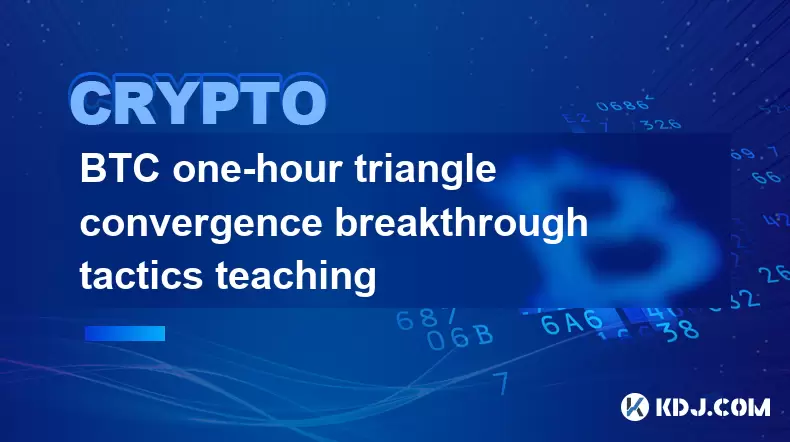
Introduction to BTC One-Hour Triangle Convergence
The BTC one-hour triangle convergence is a technical analysis pattern that traders often use to anticipate potential price breakouts. This pattern forms when the price action of Bitcoin (BTC) on a one-hour chart creates a series of higher lows and lower highs, converging into a triangle shape. Understanding this pattern can be crucial for traders looking to capitalize on significant price movements. In this article, we will delve into the tactics and strategies for identifying and trading the one-hour triangle convergence in BTC.
Identifying the One-Hour Triangle Convergence
To effectively trade the BTC one-hour triangle convergence, it's essential first to recognize the pattern. The one-hour triangle convergence is characterized by a narrowing price range, forming a triangle. Here’s how to identify it:
- Higher Lows: Look for a series of lows that are progressively higher on the one-hour chart.
- Lower Highs: Simultaneously, identify a series of highs that are progressively lower.
- Convergence: The distance between these highs and lows should be decreasing, leading to a point of convergence.
Once you've identified this pattern, you can begin to prepare for a potential breakout.
Preparing for the Breakout
Preparation is key when trading the BTC one-hour triangle convergence. Here are some steps to get ready for the breakout:
- Volume Analysis: Monitor the trading volume as the triangle narrows. A significant increase in volume can often precede a breakout.
- Support and Resistance Levels: Identify key support and resistance levels outside the triangle. These levels can act as targets for the breakout.
- Risk Management: Determine your entry and exit points, as well as your stop-loss and take-profit levels, before the breakout occurs.
By preparing thoroughly, you increase your chances of successfully trading the breakout.
Trading the Breakout
When the BTC one-hour triangle convergence finally breaks out, it's time to execute your trading plan. Here’s how to do it:
- Confirm the Breakout: Wait for the price to break out of the triangle decisively. A false breakout can occur, so look for confirmation, such as a close outside the triangle on high volume.
- Entry Point: Once the breakout is confirmed, enter your trade in the direction of the breakout. If the price breaks above the triangle, go long; if it breaks below, go short.
- Stop-Loss: Place your stop-loss just inside the triangle to protect against a false breakout.
- Take-Profit: Set your take-profit levels at the identified support and resistance levels outside the triangle.
By following these steps, you can capitalize on the momentum of the breakout.
Managing the Trade
After entering the trade, managing your position effectively is crucial. Here are some tips:
- Monitor Price Action: Keep an eye on the price action post-breakout. If the price continues to move in your favor, you may consider trailing your stop-loss to lock in profits.
- Adjust Stop-Loss: If the price moves significantly in your favor, adjust your stop-loss to break even or to a level that ensures a profit.
- Take Partial Profits: Consider taking partial profits at key resistance or support levels to secure some gains while leaving the rest of your position open for further potential gains.
Effective trade management can help maximize your profits and minimize your losses.
Common Pitfalls and How to Avoid Them
Trading the BTC one-hour triangle convergence is not without its challenges. Here are some common pitfalls and how to avoid them:
- False Breakouts: False breakouts can lead to significant losses. To avoid this, wait for confirmation before entering a trade and use a tight stop-loss.
- Overtrading: Overtrading can lead to unnecessary losses. Stick to your trading plan and only trade when the pattern is clear and confirmed.
- Ignoring Volume: Volume is a critical indicator of a genuine breakout. Always monitor volume to ensure the breakout is valid.
By being aware of these pitfalls and taking steps to avoid them, you can improve your trading success.
Frequently Asked Questions
Q: How long does it typically take for a one-hour triangle convergence to form in BTC?
A: The formation of a one-hour triangle convergence in BTC can vary, but it typically takes several hours to a few days. The key is to monitor the price action closely and wait for the pattern to fully develop before making any trading decisions.
Q: Can the one-hour triangle convergence be used for other cryptocurrencies besides BTC?
A: Yes, the one-hour triangle convergence pattern can be applied to other cryptocurrencies. However, the effectiveness may vary depending on the liquidity and volatility of the specific cryptocurrency. Always ensure you have enough historical data to identify the pattern accurately.
Q: What are the best times to trade the one-hour triangle convergence in BTC?
A: The best times to trade the one-hour triangle convergence in BTC are during periods of high liquidity, such as during the overlap of major trading sessions (e.g., London and New York). These times often see increased volume, which can lead to more reliable breakouts.
Q: Is it possible to use the one-hour triangle convergence in conjunction with other technical indicators?
A: Absolutely, combining the one-hour triangle convergence with other technical indicators, such as moving averages or the Relative Strength Index (RSI), can provide additional confirmation and improve the accuracy of your trading signals. Just ensure that the indicators you use complement each other and do not contradict the triangle convergence pattern.
Disclaimer:info@kdj.com
The information provided is not trading advice. kdj.com does not assume any responsibility for any investments made based on the information provided in this article. Cryptocurrencies are highly volatile and it is highly recommended that you invest with caution after thorough research!
If you believe that the content used on this website infringes your copyright, please contact us immediately (info@kdj.com) and we will delete it promptly.
- Cryptos to Watch in 2025: Punisher Coin, Chainlink, and the Altcoin Arena
- 2025-07-27 18:30:13
- Bitcoin, Altcoins, Rebound: Navigating the Crypto Comeback Trail
- 2025-07-27 18:30:13
- Ethereum, Bitcoin, and Altcoins: A Shift in Crypto Tides?
- 2025-07-27 19:10:13
- Windtree Therapeutics' Bold BNB Strategy: A $520 Million Crypto Play
- 2025-07-27 19:10:13
- Solana, Staking, and Unilabs: What's the Buzz in the Crypto Space?
- 2025-07-27 16:50:13
- VeChain, HBAR, Remittix: Navigating the Crypto Landscape in 2025
- 2025-07-27 17:10:12
Related knowledge
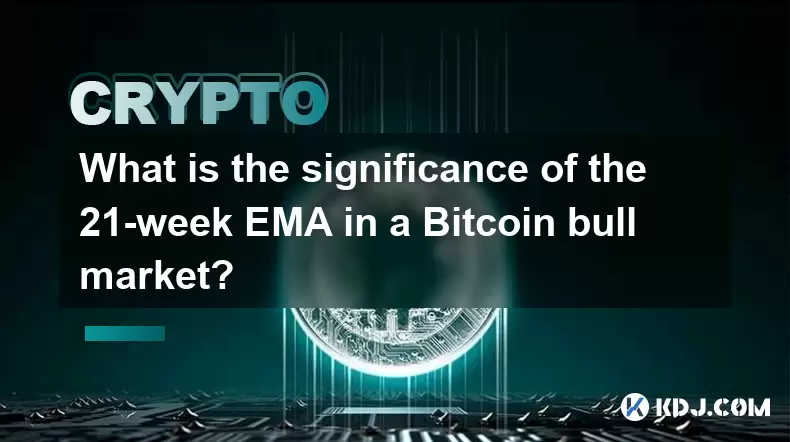
What is the significance of the 21-week EMA in a Bitcoin bull market?
Jul 10,2025 at 06:56pm
Understanding the 21-Week EMA in Cryptocurrency AnalysisThe 21-week Exponential Moving Average (EMA) is a technical indicator widely used by traders a...
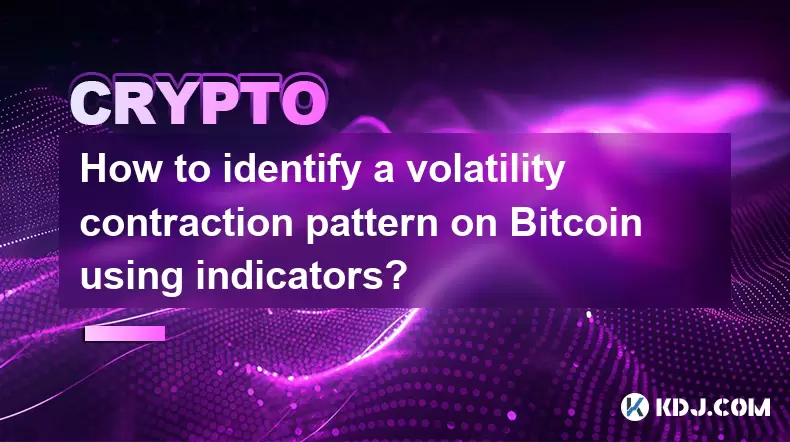
How to identify a volatility contraction pattern on Bitcoin using indicators?
Jul 07,2025 at 07:28am
What is a Volatility Contraction Pattern in Bitcoin Trading?A volatility contraction pattern refers to a phase where the price movement of an asset, s...
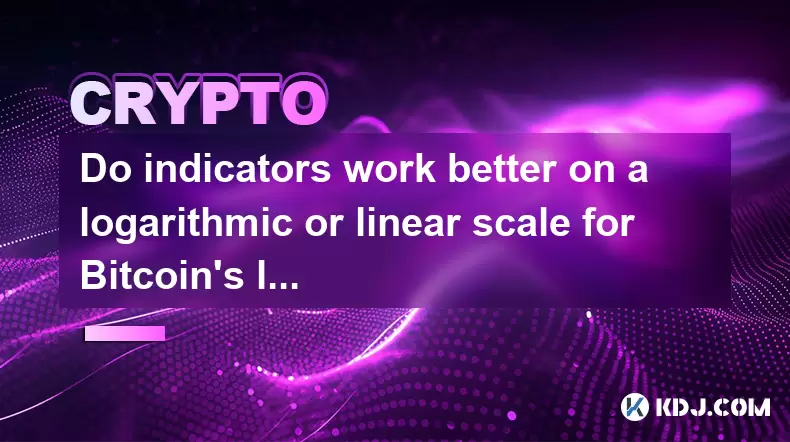
Do indicators work better on a logarithmic or linear scale for Bitcoin's long-term chart?
Jul 08,2025 at 01:42pm
Understanding Chart Scales in Cryptocurrency TradingIn cryptocurrency trading, particularly for analyzing Bitcoin's long-term trends, chart scales pla...

What is the Woodies CCI indicator and can it be used for Bitcoin?
Jul 04,2025 at 05:14pm
Understanding the Woodies CCI IndicatorThe Woodies CCI indicator is a variation of the traditional Commodity Channel Index (CCI), which was originally...
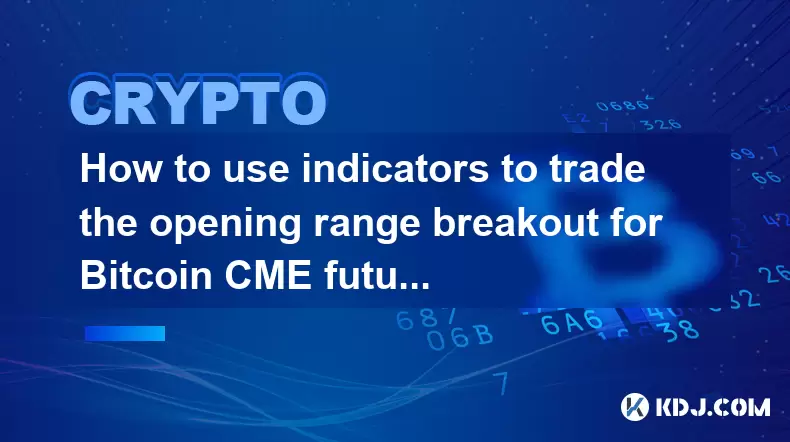
How to use indicators to trade the opening range breakout for Bitcoin CME futures?
Jul 05,2025 at 07:35pm
What Is the Opening Range Breakout Strategy?The opening range breakout (ORB) strategy is a popular trading technique used in both traditional markets ...

How to use the Relative Vigor Index (RVI) for Bitcoin trading?
Jul 07,2025 at 02:00pm
Understanding the Relative Vigor Index (RVI)The Relative Vigor Index (RVI) is a technical analysis tool used to assess the strength of price movements...

What is the significance of the 21-week EMA in a Bitcoin bull market?
Jul 10,2025 at 06:56pm
Understanding the 21-Week EMA in Cryptocurrency AnalysisThe 21-week Exponential Moving Average (EMA) is a technical indicator widely used by traders a...

How to identify a volatility contraction pattern on Bitcoin using indicators?
Jul 07,2025 at 07:28am
What is a Volatility Contraction Pattern in Bitcoin Trading?A volatility contraction pattern refers to a phase where the price movement of an asset, s...

Do indicators work better on a logarithmic or linear scale for Bitcoin's long-term chart?
Jul 08,2025 at 01:42pm
Understanding Chart Scales in Cryptocurrency TradingIn cryptocurrency trading, particularly for analyzing Bitcoin's long-term trends, chart scales pla...

What is the Woodies CCI indicator and can it be used for Bitcoin?
Jul 04,2025 at 05:14pm
Understanding the Woodies CCI IndicatorThe Woodies CCI indicator is a variation of the traditional Commodity Channel Index (CCI), which was originally...

How to use indicators to trade the opening range breakout for Bitcoin CME futures?
Jul 05,2025 at 07:35pm
What Is the Opening Range Breakout Strategy?The opening range breakout (ORB) strategy is a popular trading technique used in both traditional markets ...

How to use the Relative Vigor Index (RVI) for Bitcoin trading?
Jul 07,2025 at 02:00pm
Understanding the Relative Vigor Index (RVI)The Relative Vigor Index (RVI) is a technical analysis tool used to assess the strength of price movements...
See all articles

























































































